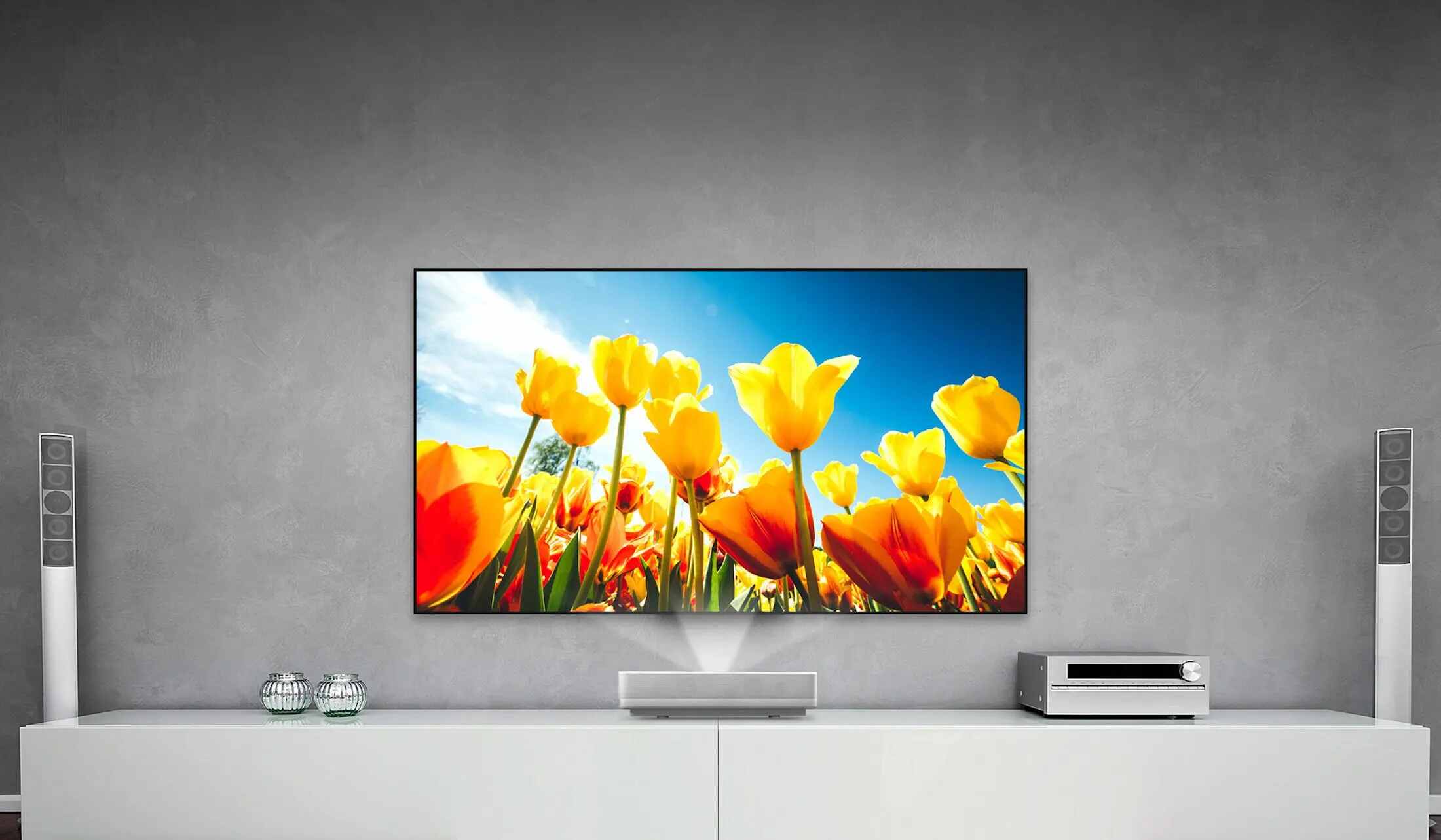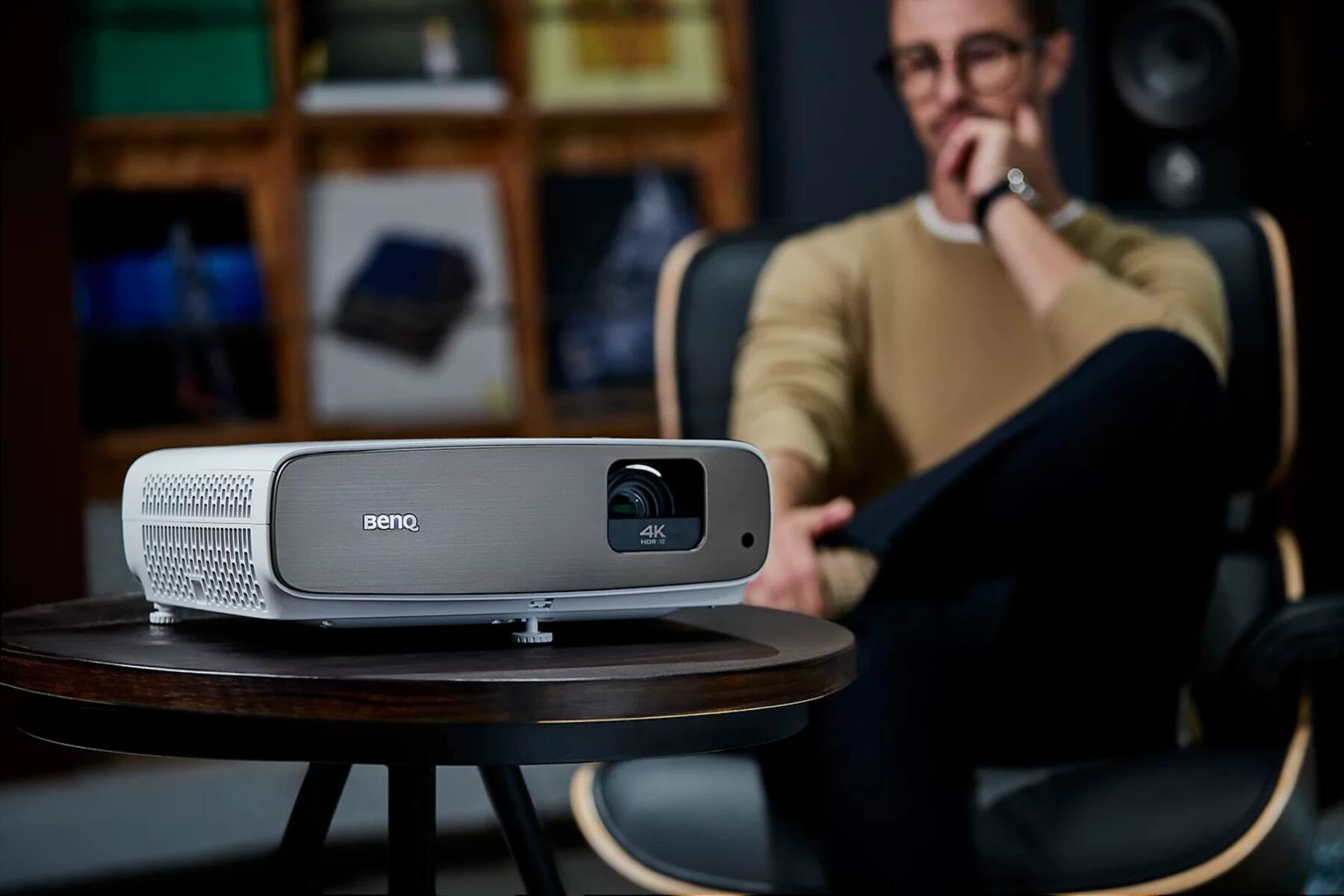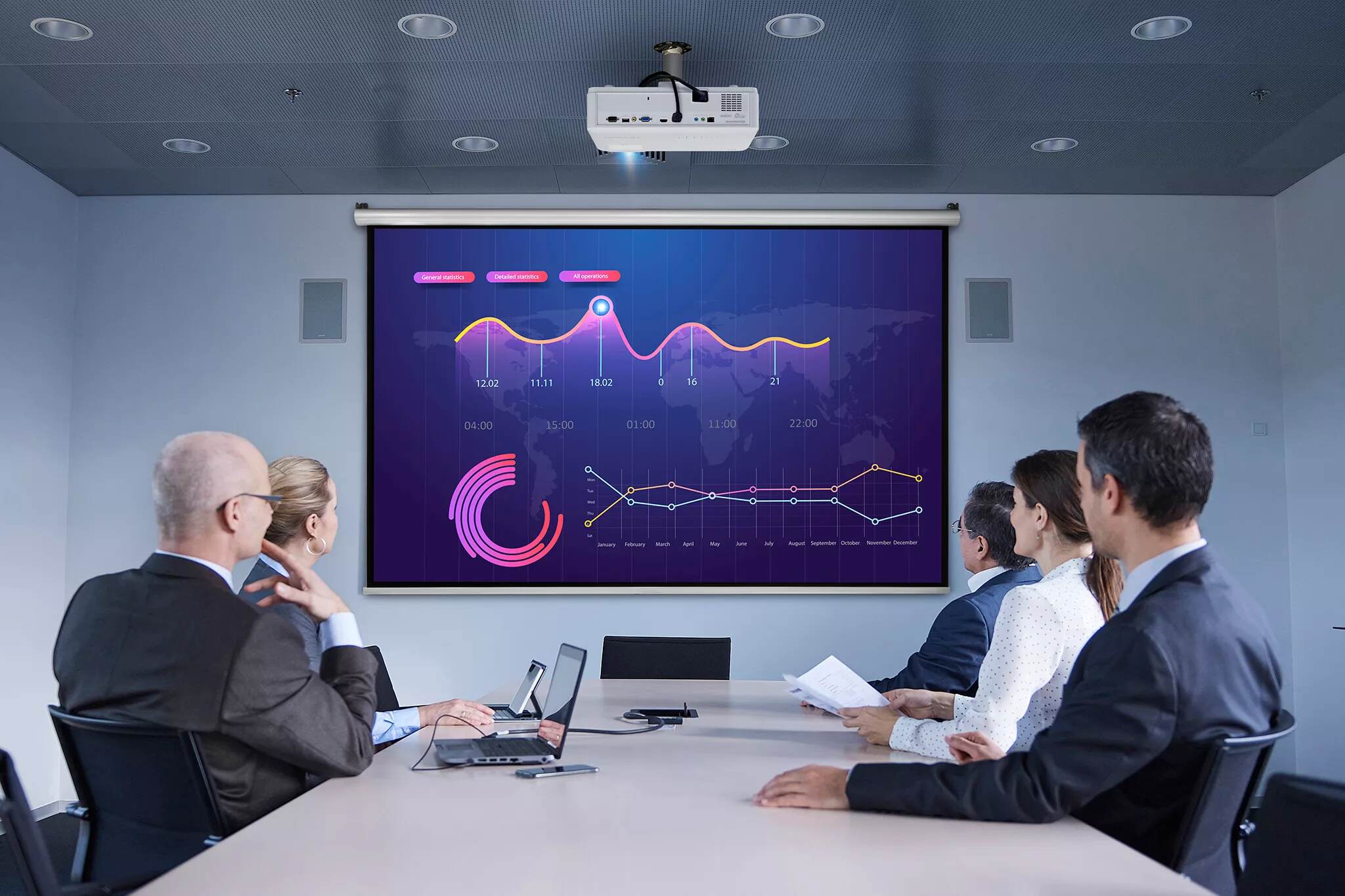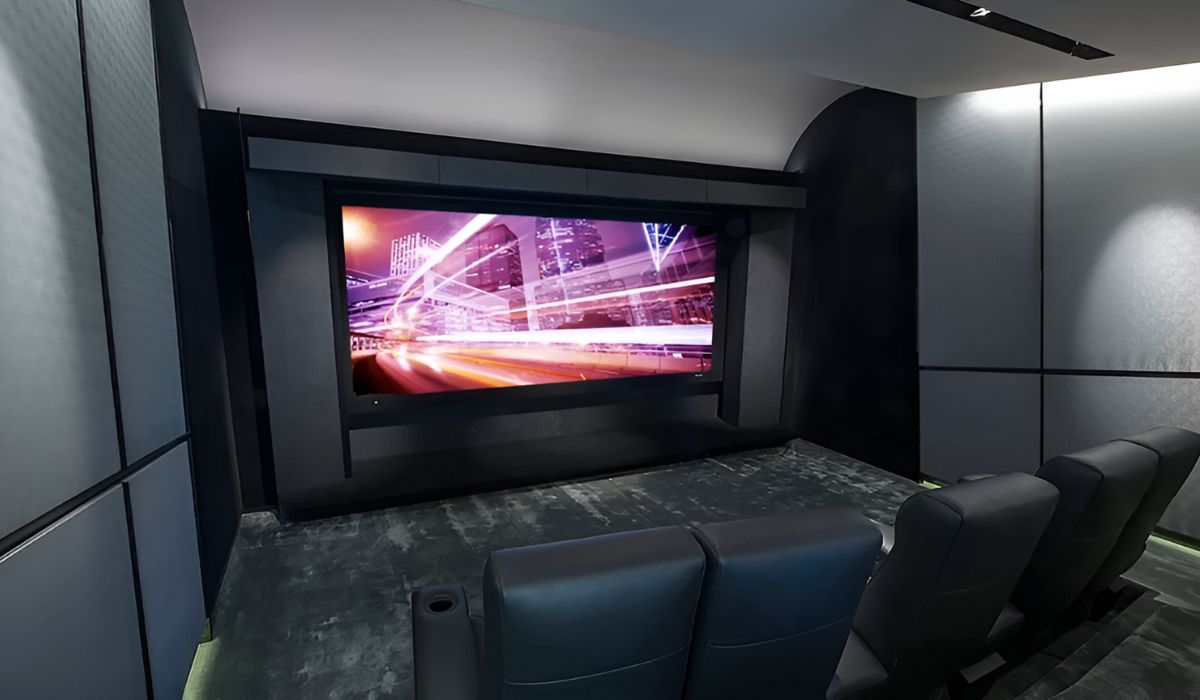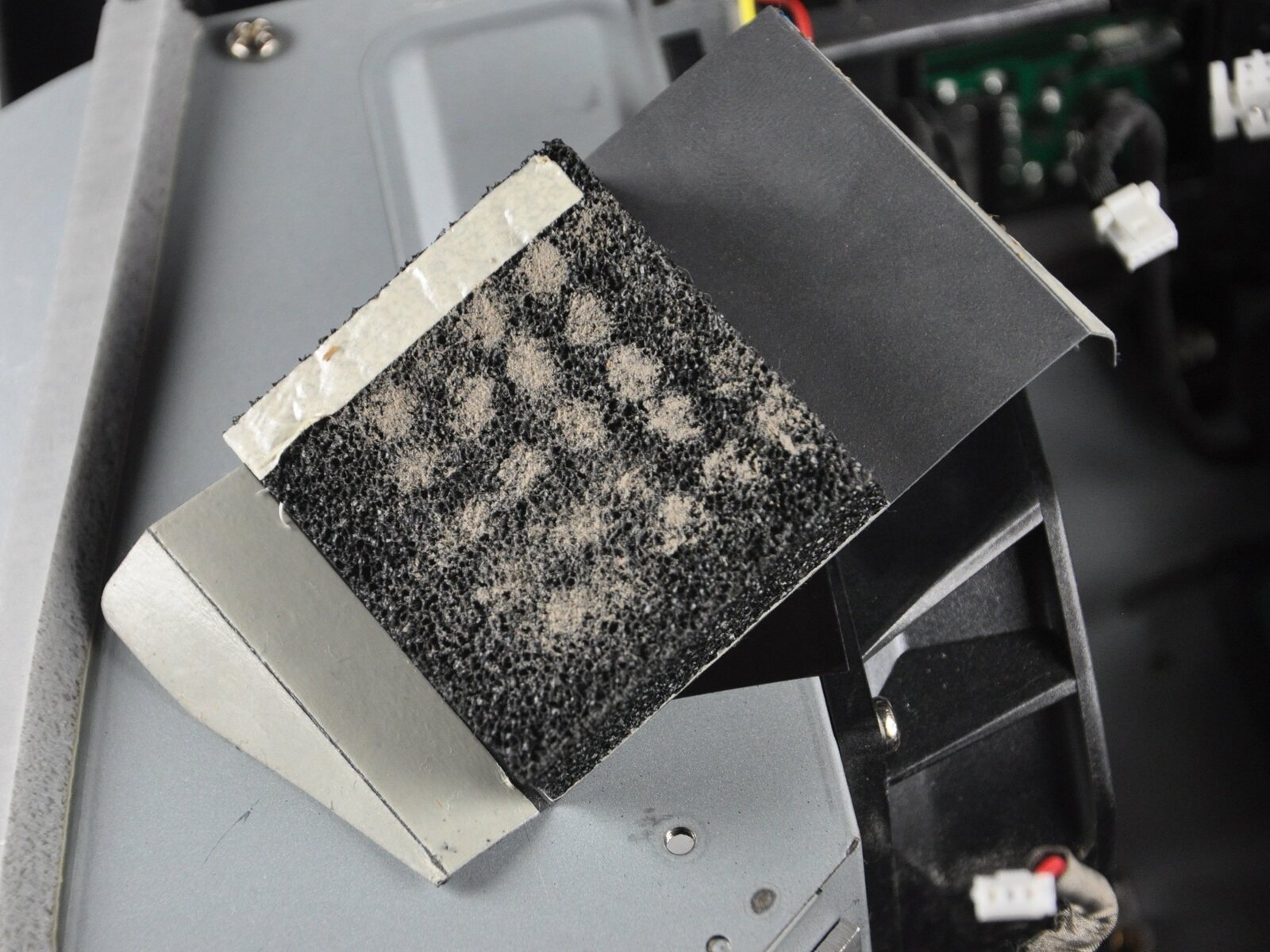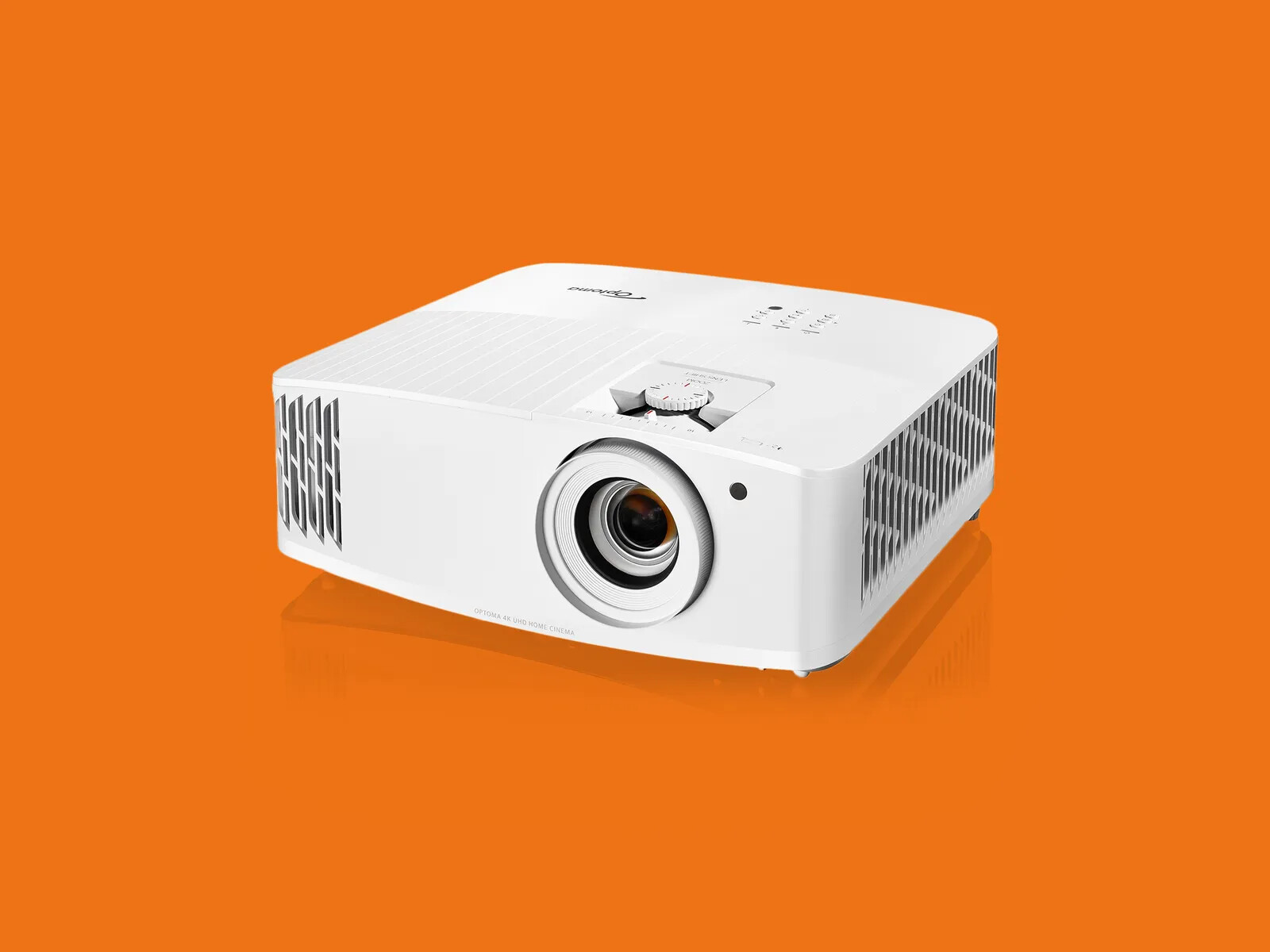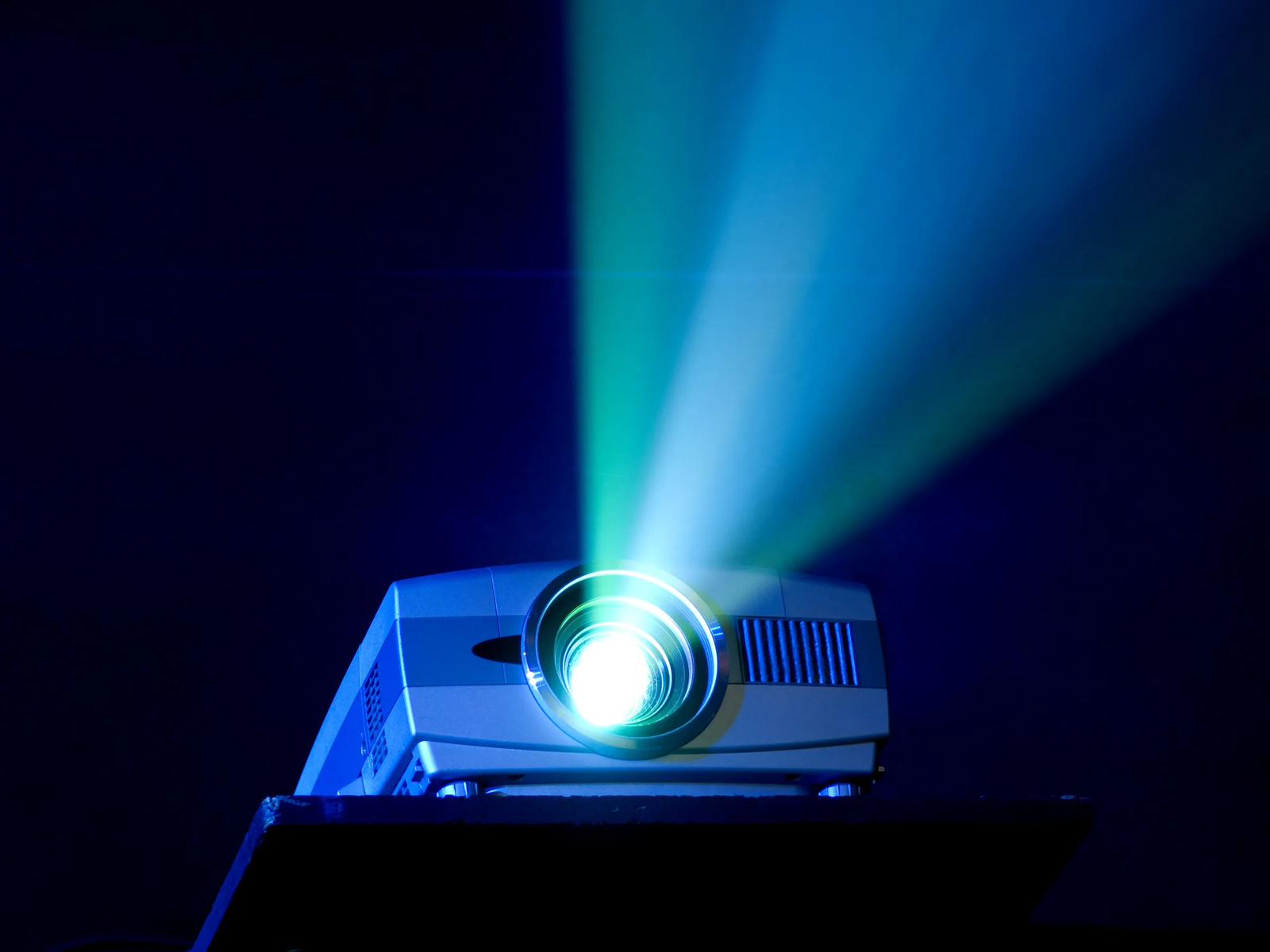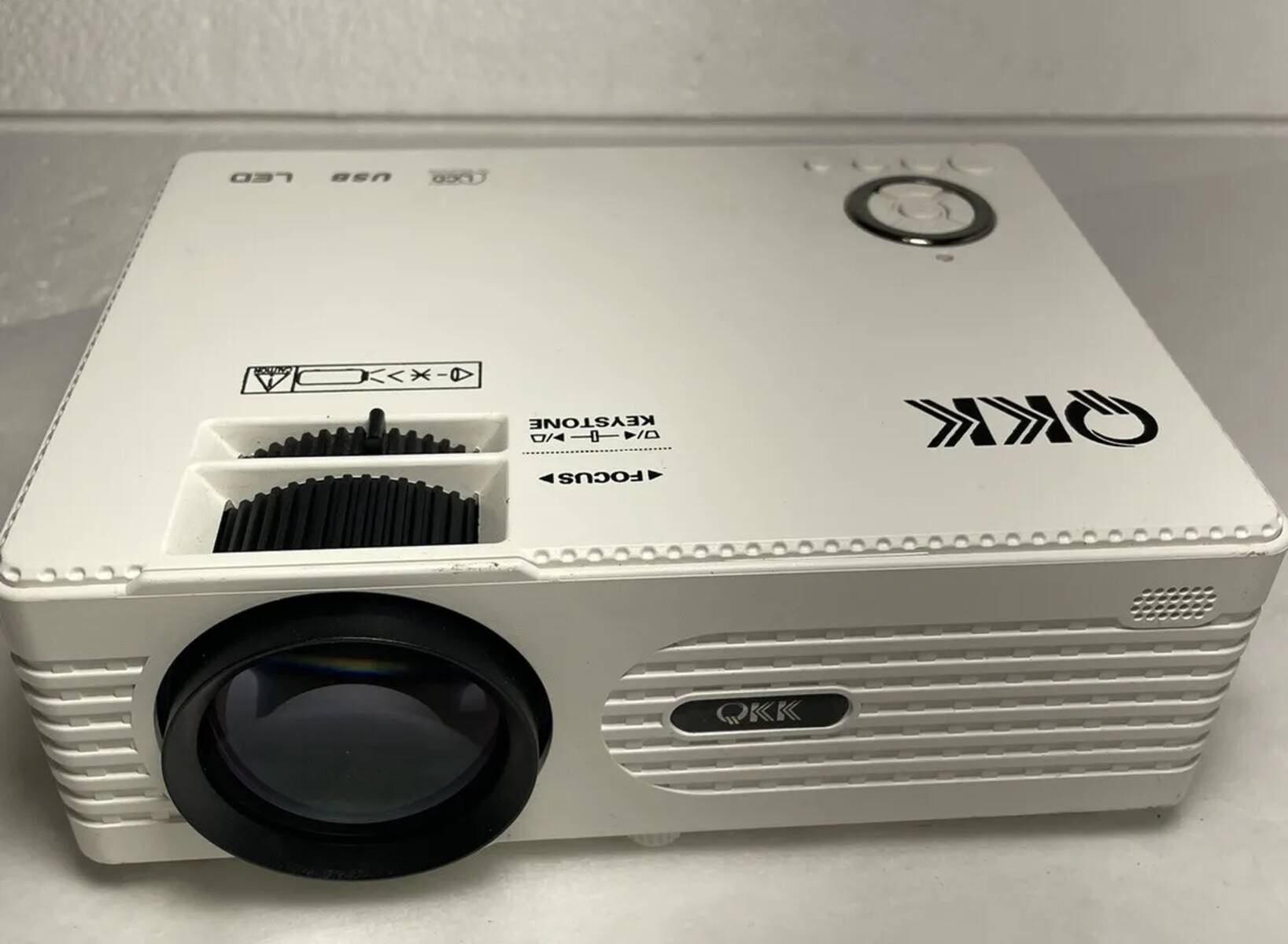Introduction
Welcome to the world of home entertainment! With the advent of projectors, we can now enjoy larger-than-life movie experiences right in the comfort of our own homes. However, one common issue that projector owners often encounter is the noise generated by these devices. The constant humming and whirring can be both distracting and annoying, detracting from the overall viewing experience.
If you find yourself asking, “How can I make my projector quieter?” you’ve come to the right place. In this article, we will explore various methods and strategies to help reduce the noise emitted by your projector. By implementing some of these solutions, you can enjoy your movies, presentations, and gaming sessions without the unnecessary background noise.
Before we delve into the specifics, it’s important to note that projectors, like any electronic device, produce noise as a byproduct of their internal components. These components include cooling fans, color wheels, and motors, all of which contribute to the overall noise level. While it’s not possible to eliminate all the noise entirely, there are steps you can take to significantly reduce it.
Now that we have established the issue at hand, let’s explore some practical solutions that will help make your projector quieter. Whether you’re a casual movie enthusiast, a dedicated gamer, or a professional presenter, these tips and techniques will help create a more enjoyable and immersive experience.
Understanding the Noise
Before we dive into the various methods of reducing projector noise, it’s essential to understand the sources of the noise. By identifying the different components that contribute to the overall noise, we can better address each factor individually.
One of the main culprits of projector noise is the cooling fan. Projectors generate a significant amount of heat, and cooling fans are necessary to prevent overheating. These fans can produce a constant humming sound, especially if they are operating at high speeds. Additionally, the color wheel, which is responsible for projecting colors onto the screen, can also generate noise as it spins.
Another factor that contributes to projector noise is the vibration produced by the motors and moving parts inside the device. These vibrations can then be amplified when the projector is placed on a surface that resonates with the vibrations, such as a table or a shelf.
Additionally, the placement and proximity of the projector to the viewing area can greatly impact the perceived noise level. If the projector is placed too close to the audience, the noise will be more noticeable. On the other hand, if the projector is installed in a dedicated projection room or placed farther away from the viewing area, the noise may be less audible.
Now that we have a better understanding of the sources of projector noise, we can explore various solutions to minimize and mitigate these noise factors. In the following sections, we will discuss placement and isolation techniques, cooling and ventilation methods, the use of noise dampening materials, replacing the projector fan, utilizing a noise reduction box, and maintenance practices to keep your projector running smoothly and quietly.
Placement and Isolation
The placement of your projector plays a significant role in determining the noise level experienced during operation. When deciding on the optimal placement for your projector, consider the following tips to minimize noise:
- Distance from the audience: Position the projector at a reasonable distance from the viewing area. The farther the projector is from the audience, the lower the perceived noise. This allows the sound to disperse and reduces the direct impact of the noise on viewers.
- Vibration isolation: Placing your projector on a surface that minimizes vibrations can help reduce noise. Use vibration isolation pads or a dedicated projector mount with built-in vibration dampening features to isolate the projector from the surface it’s placed on.
- Dedicated projection room: If feasible, consider installing your projector in a separate room or enclosure. This can provide a dedicated space for your projector, reducing the noise experienced by viewers in the main viewing area.
- Soundproofing: Another effective method to isolate projector noise is to soundproof the room or area where the projector is installed. Adding sound-absorbing materials like acoustic panels or carpets to the walls, floors, and ceiling can help minimize noise reflections and absorb the projector’s sound waves.
By carefully considering the placement and isolation of your projector, you can significantly reduce the noise level and create a more immersive and enjoyable viewing experience. Experiment with different placement options and isolation techniques to find the optimal setup for minimal noise disruption.
Cooling and Ventilation
Proper cooling and ventilation are essential for the optimal performance and longevity of your projector. Implementing effective cooling strategies can also help reduce noise generated by the cooling fans. Here are some tips to improve cooling and ventilation:
- Clean the air filters: Dust and debris can accumulate on the projector’s air filters, obstructing airflow and causing the cooling fans to work harder. Regularly clean or replace the filters according to the manufacturer’s guidelines to ensure proper air circulation and prevent the fans from running at high speeds.
- Proper ventilation: Ensure that there is adequate space around the projector for air to flow freely. Avoid placing the projector in enclosed spaces or in close proximity to walls or other objects that can block the airflow. This will help prevent the projector from overheating and reduce the strain on the cooling fans.
- External cooling solutions: Consider using external cooling solutions such as cooling pads or external fans to assist in dissipating heat. These additional cooling mechanisms can help reduce the workload on the projector’s built-in fans, subsequently lowering noise levels.
- Ambient temperature: Maintain a suitable ambient temperature in the room where the projector is installed. Excessive heat in the environment can put additional strain on the projector’s cooling system, resulting in louder fan noise. Keep the room temperature at a comfortable level to ensure optimal cooling performance and noise reduction.
By implementing these cooling and ventilation techniques, you can create a more efficient and quieter operating environment for your projector. Regular maintenance and ensuring proper airflow will not only extend the lifespan of your projector but also contribute to a more enjoyable viewing experience with minimal noise interference.
Noise Dampening Materials
Noise dampening materials can significantly reduce the vibrations and noise produced by your projector. By incorporating these materials into your setup, you can create a quieter environment for your viewing pleasure. Consider the following options:
- Acoustic Panels: Install acoustic panels on the walls surrounding your projector area. These panels absorb sound waves and reduce echoes, ultimately minimizing the noise bouncing off the walls and back into the room.
- Soundproof Curtains or Blinds: Hang soundproof curtains or blinds over windows and doors to block external noise and prevent noise from escaping or entering the room. These materials have noise-reducing properties that can help create a more serene environment for your projection experience.
- Rugs or Carpeting: Place rugs or carpeting on the floor around the projector area. These soft surfaces can absorb sound waves and prevent them from bouncing or echoing, thus reducing overall noise levels in the room.
- Noise-Isolating Foam: Use noise-isolating foam pads or mats underneath the projector or on the surface it rests on. These foams act as shock absorbers, reducing vibrations that can contribute to noise generation.
By strategically incorporating noise dampening materials into your projector setup, you can effectively minimize noise and create a more serene viewing environment. Experiment with different materials and placements to find the combination that works best for you.
Replacing the Projector Fan
If the noise from your projector is primarily caused by a faulty or worn-out fan, replacing it can be an effective solution. Here’s how you can replace the projector fan:
- Identify the fan type: Determine the type and specifications of the existing fan in your projector. Check the manufacturer’s documentation or consult their website for information on compatible replacement fans.
- Obtain a replacement fan: Order a suitable replacement fan from a reputable seller or directly from the projector manufacturer. Ensure that the fan you choose is compatible with your projector model.
- Prepare for replacement: Before starting the replacement process, ensure that the projector is turned off and disconnected from any power sources. Allow it to cool down completely before proceeding further.
- Access the fan: Depending on the projector model, you may need to remove the projector’s outer casing or access panel to gain access to the fan. Refer to the manufacturer’s instructions for the specific steps required.
- Remove the old fan: Carefully disconnect the wires connected to the old fan and unscrew or unclip it from its housing. Take note of the fan’s orientation and how it is mounted to ensure proper installation of the replacement fan.
- Install the replacement fan: Connect the wires of the replacement fan to the corresponding connectors in the projector. Align the new fan correctly and secure it in place using screws or clips.
- Reassemble the projector: Put back any removed panels, ensuring that they are properly secured. Double-check all connections to ensure everything is in place.
- Test the projector: Power on the projector and check if the noise level has significantly reduced. If the replacement fan is functioning correctly, you should observe a reduction in noise.
Replacing the projector fan may require technical expertise. If you are unsure about the process, it is recommended to seek help from a professional or contact the manufacturer’s customer support for guidance. Proper installation of a new fan can help eliminate unwanted noise and restore your projector to its quieter operation.
Using a Noise Reduction Box
If you’re looking for a more advanced solution to reduce projector noise, using a noise reduction box or enclosure can be highly effective. A noise reduction box is designed to encapsulate the projector and dampen the noise it produces. Here’s how you can utilize a noise reduction box:
- Select a suitable noise reduction box: Choose a noise reduction box that is specifically designed for projectors. Look for a box that is compatible with the size and model of your projector.
- Set up the noise reduction box: Follow the manufacturer’s instructions to assemble the noise reduction box. Ensure that there are proper openings for ventilation and cable management.
- Install your projector inside the box: Carefully place the projector inside the noise reduction box, ensuring that all cables are properly connected and routed through the designated openings.
- Secure the projector: Use the provided straps or brackets to securely mount the projector inside the box. This will prevent any movement or vibrations that may contribute to noise generation.
- Close the box: Close and latch the noise reduction box, ensuring a tight seal. This will help contain the noise within the box and prevent it from escaping into the room.
- Test the noise reduction: Power on the projector and observe the noise level. You should experience a noticeable reduction in noise when using the noise reduction box.
A noise reduction box can be an effective solution for those seeking maximum noise reduction. It not only dampens the sound produced by the projector but also provides a neat and organized setup. However, it is important to note that a noise reduction box may restrict airflow, so proper ventilation should always be ensured to prevent overheating of the projector.
Before purchasing a noise reduction box, ensure that it is compatible with your specific projector model and consider any additional features such as cable management and accessibility. Investing in a noise reduction box can significantly enhance your viewing experience by minimizing projector noise and creating a more immersive environment.
Maintenance and Regular Cleaning
To ensure that your projector operates at its best and maintains a quieter performance, regular maintenance and cleaning are crucial. Here’s a guide to help you with the process:
- Clean the air filters: The air filters in your projector can accumulate dust and debris over time, restricting airflow and causing the cooling fans to work harder. Clean or replace the filters according to the manufacturer’s instructions on a regular basis.
- Inspect and clean the projector lens: Dust and fingerprints on the projector lens can affect image clarity and require the projector to work harder. Use a microfiber cloth to gently clean the lens, ensuring that you do not scratch or damage it.
- Check for obstructions: Regularly inspect the projector and its surroundings for any obstructions that could impede airflow or contribute to noise. Remove any objects or obstacles that may be blocking vents or fans.
- Keep the projector cool: Ensure that the projector is placed in a well-ventilated area and that airflow is not restricted. Avoid placing it near heat sources or in direct sunlight, as excessive heat can lead to increased fan noise and potential damage.
- Handle with care: When moving or transporting the projector, handle it with care to avoid any damage or dislodging of internal components. Rough handling can lead to increased noise and potential malfunction.
- Adhere to maintenance schedules: Follow the maintenance schedules and guidelines provided by the manufacturer. This may include regular servicing by professionals to clean internal components and ensure optimal performance.
- Refer to the user manual: Consult the projector’s user manual for specific maintenance instructions and recommended cleaning procedures. It is essential to follow these guidelines to avoid any damage and maintain warranty validity.
By incorporating regular maintenance and cleaning practices into your projector care routine, you can prevent excessive noise caused by dust buildup and ensure that your projector continues to provide a quieter operation. Regularly checking for obstructions and maintaining proper airflow will contribute to a smooth and efficient performance.
Remember, if you are unsure about any maintenance or cleaning procedures, it’s always best to consult the manufacturer’s instructions or seek professional assistance to avoid any potential damage to your projector.
Conclusion
Having a quieter projector can greatly enhance your overall viewing experience, whether you’re enjoying movies, gaming, or giving presentations. While it’s not possible to completely eliminate all projector noise, there are several effective strategies you can implement to significantly reduce it.
Understanding the sources of projector noise, such as cooling fans and vibration, is crucial in finding the right solutions. By considering factors like placement and isolation, cooling and ventilation, noise dampening materials, replacing the projector fan, and utilizing a noise reduction box, you can create a more serene and enjoyable environment for your projector usage.
Regular maintenance and cleaning play an important role in maintaining a quieter projector. Properly caring for your projector, including cleaning the air filters, inspecting for obstructions, and adhering to maintenance schedules, will help preserve its performance and reduce noise levels over time.
Remember to consult the manufacturer’s instructions and guidelines when implementing any modifications or maintenance practices to avoid any potential damage. If you are unsure, it is always advisable to seek professional assistance.
By implementing the tips and strategies outlined in this article, you can significantly reduce projector noise and create a more immersive and enjoyable viewing experience. So, go ahead, make your projector quieter, and enjoy your favorite movies, games, and presentations without unnecessary distractions.







